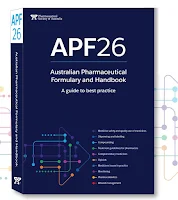Therapeutic Guidelines, Australian Medicines Handbook and APF
Introduction
If I had completed my university years and continued practicing in Australia, I believe these would be my top three references. However, I did not; I came back to Malaysia for good.
- Therapeutic Guidelines (formerly eTG Complete)
- Australian Medicines Handbook
- Australian Pharmaceutical Formulary and Handbook
Therapeutic Guidelines
Much of what I have learned in disease management during my university years would be based on Therapeutic Guidelines (formerly eTG Complete).
- It serves the same purpose as Malaysia Clinical Practice Guideline (Malaysia CPG), but it covers a much broader range of diseases and is more timely updated.
During my hospital placement, I recalled a drug information pharmacist mentioning that although Therapeutic Guidelines is a national guideline, they do compare it against international guidelines and UpToDate to develop hospital management guidelines.
- This pharmacist emphasized the importance of not just knowing if a medicine is indicated for a disease, but also understanding the recommended management of the disease. Only then can one have a broader and clearer overall picture.
Australian Medicines Handbook
You will find me frequently citing the Australian Medicines Handbook throughout this blog. Undoubtedly, it remains my favourite drug reference (although I cannot afford the latest edition). Unlike others, it provides very useful yet concise information on
- Evidence and clinical practice for some diseases
- Comparative information on drugs of the same class of family
- Individual drugs monographs with patient counselling and practice points
The first edition of the Australian Medicines Handbook was published in May 1998 after 7 years of planning and hard work.
- While modelled on the concept of the British National Formulary, the AMH is entirely Australian and reflects contemporary Australian clinical practice.
- Now, updated Australian Medicines Handbook is published each January.
In addition to the Australian Medicines Handbook, there are two companions available today.
- AMH Children's Dosing Companion - Offers a detailed dosing guide of over 500 drugs for prescribing and administering medicines to children from birth to 18 years.
- AMH Aged Care Companion - Contains information on managing more than 70 common conditions in the elderly, with a focus on issues relevant to older people using medicines.
Australian Pharmaceutical Formulary and Handbook
Similar to Australian Medicines Handbook, the Australian Pharmaceutical Formulary and Handbook (APF) provides dosage and counselling information, but it also provides several useful information chapters, such as
- Dispensing and labelling - Cautionary advisory labels recommendations for medicines
- Compounding with extemporaneous formulary - Separate chapters dedicated to compounding sterile medicines and handling or compounding hazardous medicines. Expiry dates guidance aligned with the United States Pharmacopeia.
- Treatment guidelines for pharmacists - Essential guidance on managing a wide range of minor ailments
- Complementary medicines
- Pharmacokinetics
- Wound management
Summary
In Malaysia's healthcare landscape, a single, comprehensive therapeutic guideline compiling clinical management for all diseases does not exist.
- Instead, the Academy of Medicine Malaysia maintains an official website that hosts various Malaysian Clinical Practice Guidelines (CPGs).
- Complementing these, the Pharmaceutical Services Programme of the Ministry of Health Malaysia publishes valuable pharmacy guidelines and policies.
Beyond these official sources, various healthcare societies and associations also contribute by publishing practical guides relevant to their specific disciplines. Examples include:
- Guide to Antimicrobial Therapy in the Adult ICU, 2023
- ICU Management Protocols, 2019
- Pediatric Protocols for Malaysian Hospitals, 2019
- Practical Guide to Insulin Therapy in Type 2 Diabetes Mellitus, 2024
For daily practice, healthcare professionals may also refer to international guidelines such as GOLD, GINA, KDIGO, ESPEN and ESC, to inform their patient management.
Given that public healthcare is centrally provided by government hospitals and clinics, prescribing practices are guided by the Ministry of Health Medicines Formulary and local formularies.
- Currently, a single, consolidated national drug formulary encompassing all drugs legally available for use across both public and private sectors does not exist in Malaysia.



Hi, where I can get AMH and APF? Can buy from Malaysia? Where did you get yours?
ReplyDeleteI got my copies when I was studying uni. May consider to get it through Kamal Medical Book Store or current students studying Monash Pharmacy Course.
DeleteWhats equivalent to the AMH and eTg in Malaysia?
ReplyDeleteThank you for the question. I will delve into this issue more in the coming blog post updates.
Delete